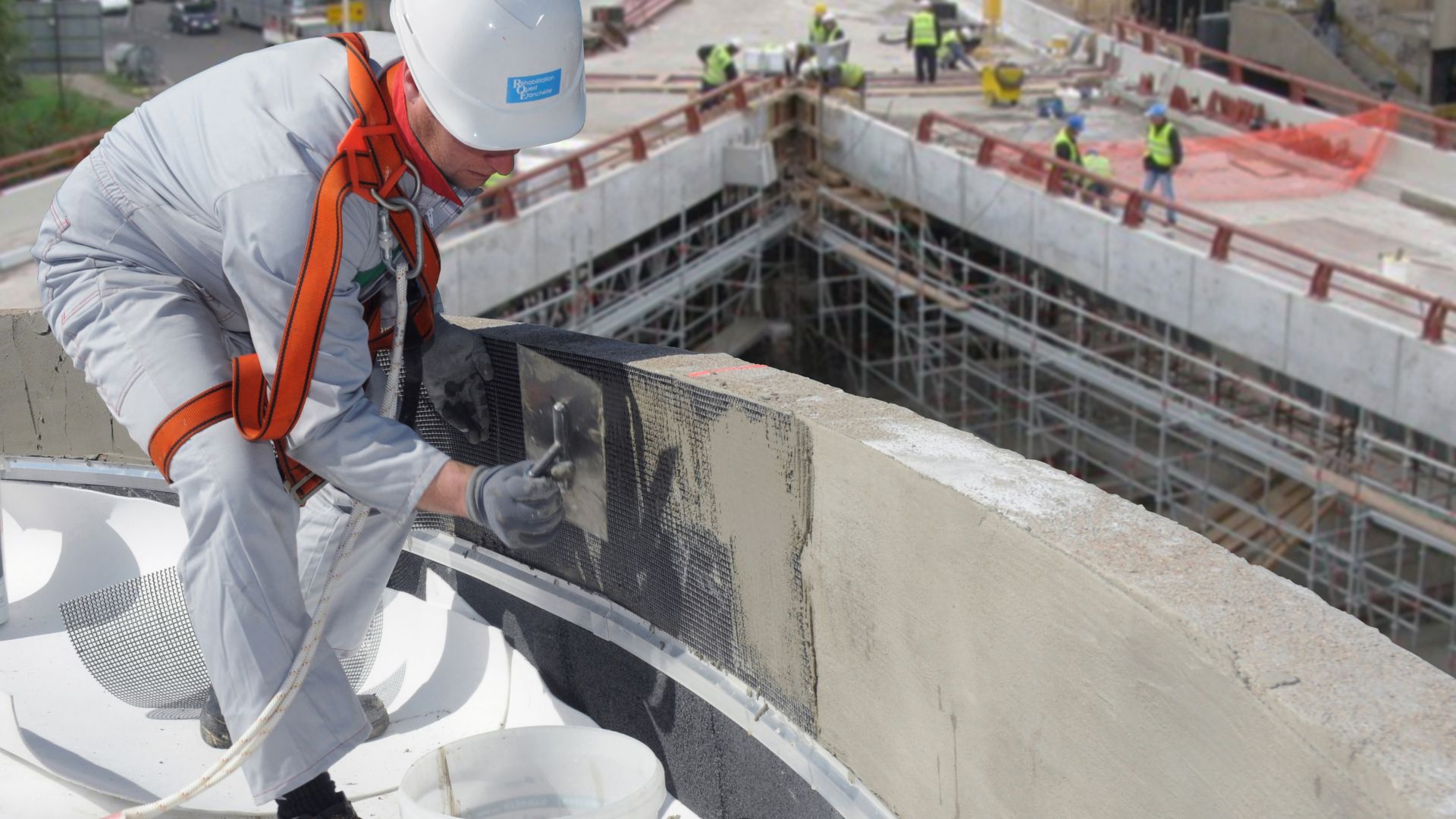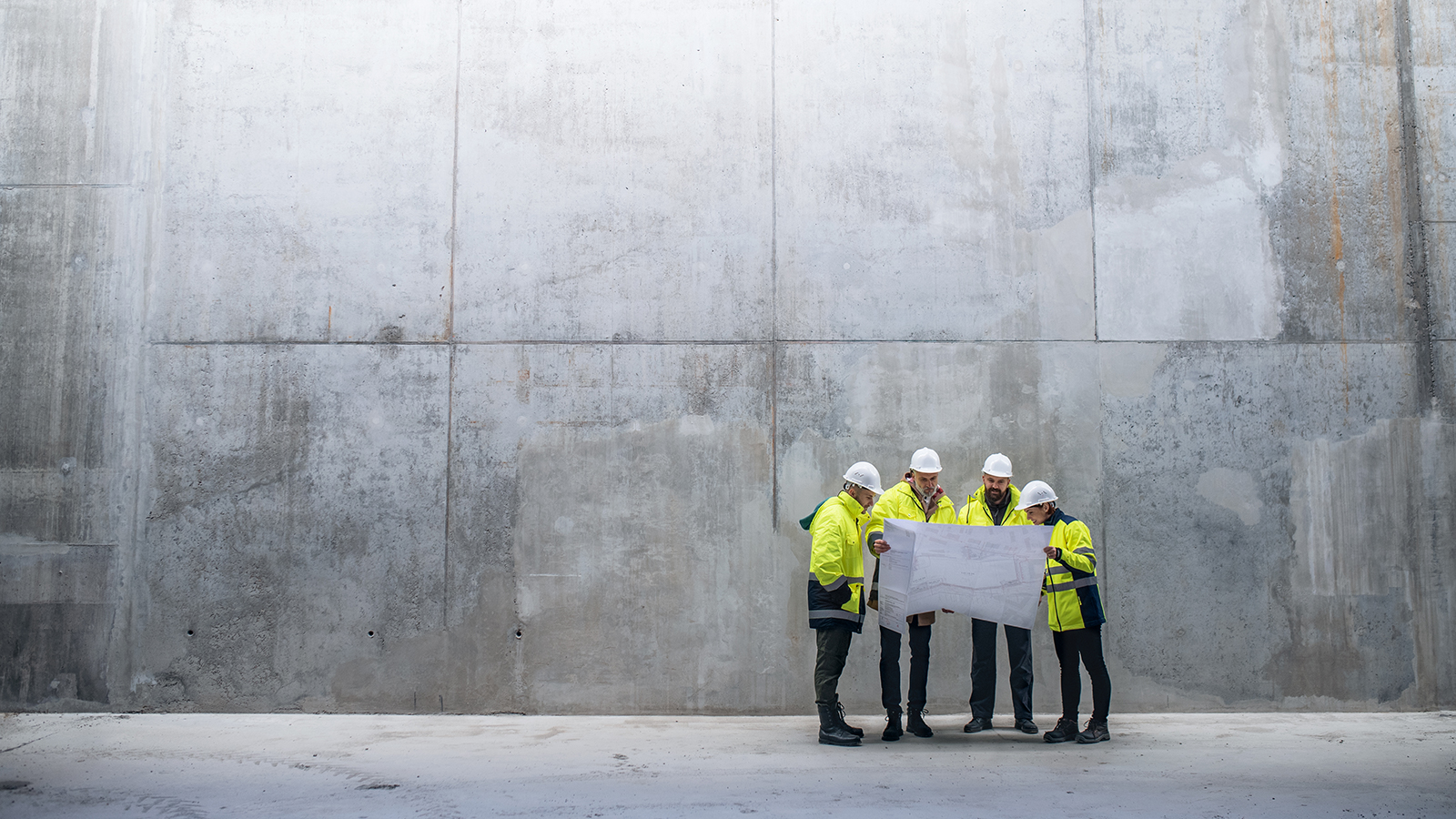The Necessary Duty of Concrete Foundation in Structural Integrity and Durability
When it comes to developing a residential property, the foundation is extra essential than you could believe. Concrete foundations offer unrivaled toughness and sturdiness, guaranteeing your framework can endure different environmental challenges. Without a strong base, you run the risk of potential concerns like moving or cracking, which can endanger safety and security and worth. Understanding the nuances of concrete structures might be the key to preserving your financial investment for many years to come. So, what should you think about following?
Understanding the Importance of Concrete Foundations
Concrete foundations are important to the overall security of any type of framework, as they provide the essential support required to withstand different loads and environmental conditions. When you consider developing a home or an industrial room, the structure is the first thing you should think about. It functions as an obstacle against wetness, shielding your building from water damages. A well-placed concrete structure additionally stops settling and shifting, which can result in fractures in walls and floorings. You'll wish to guarantee that the structure is appropriately developed and reinforced, as this affects the durability of your building. In addition, a strong structure can improve energy effectiveness by reducing air leaks. Keep in mind, neglecting the importance of a concrete structure can cause costly repairs down the line. So, buying a high quality structure upfront is important for the stability and sturdiness of your structure.
Benefits of Concrete Foundations for Structural Stability
While several aspects contribute to a structure's structural integrity, concrete structures use unparalleled longevity and toughness. You'll value that concrete can endure extreme weather, resisting both dampness and temperature fluctuations. This strength indicates your framework is less likely to experience breaking or moving gradually, which can jeopardize its safety.Additionally, concrete's inherent weight gives a solid base, preventing movement throughout all-natural events like earthquakes or floodings. When you select a concrete foundation, you're additionally choosing low upkeep; unlike wood, it won't rot or draw in bugs, saving you money and time in repairs.Moreover, concrete's fire resistance provides added safety, guaranteeing your structure can sustain high temperatures without considerable damages. In general, spending in a concrete structure indicates you're prioritizing the lasting security and honesty of your building, making it a sensible option for any type of construction project.
Typical Kinds Of Concrete Foundations
When it involves building foundations, understanding the typical kinds of concrete foundations can aid you make educated selections for your task. One of the most prevalent types consist of slab-on-grade, crawl area, and full basement foundations.A slab-on-grade foundation is a simple, cost-effective choice, where a thick concrete slab is poured straight on the ground. This kind works well in cozy environments, as it decreases warmth loss.Crawl area foundations raise the home somewhat over ground, enabling for air flow and access to plumbing and electrical systems. This design can help prevent dampness issues.Full basement structures supply extra living or storage space while supplying outstanding architectural assistance. They require even more excavation and are typically used in chillier environments to stop frost heave.
Variables to Consider When Designing a Concrete Foundation

Finest Practices for Putting Up Concrete Foundations
When you're setting up a concrete structure, appropriate site preparation is necessary to assure stability (West Coast General Engineering concrete foundation Rancho Cucamonga). You'll likewise require to understand support techniques to enhance toughness and resilience. Do not forget the curing procedure, as it plays an essential function in attaining a strong foundation.
Site Preparation Relevance
It might appear straightforward, appropriate site prep work is important for ensuring a strong and long lasting concrete foundation. Begin by clearing the location of any type of particles, vegetation, or natural material that can endanger the structure's stability. Next, examine the soil type and compaction; you could need to dig deep into or add materials to create a secure base. Level the ground to assure also weight circulation and avoid working out concerns later. Setting up proper drainage systems is likewise vital to prevent water build-up, which can deteriorate the structure over time. Mark out the structure's measurements accurately to lead the putting process. By complying with these actions, you'll set the phase for a successful concrete foundation that stands the examination of time.
Reinforcement Techniques Explained
When the site is appropriately prepared, the following action in ensuring a sturdy concrete foundation involves implementing efficient reinforcement methods. You need to start by utilizing steel rebar, which supplies tensile stamina and aids avoid breaking. Lay the rebar in a grid pattern, seeing to it it rises making use of spacers to keep correct coverage. Additionally, take into consideration using cord mesh for additional assistance, especially in areas based on hefty loads. Do not forget to tie the rebar intersections firmly with cable. For bigger structures, fiber support can improve longevity, reducing the danger of contraction fractures. Constantly comply with neighborhood building regulations and guidelines to make sure compliance. By using these reinforcement methods, you'll significantly boost your structure's stamina and long life, laying a strong groundwork for your structure.
Healing Refine Basics
To assure your concrete structure cures correctly, it is essential to preserve sufficient dampness and temperature level conditions right away after pouring. Begin by covering the surface with a wet cloth or plastic sheeting to preserve dampness. This maintains the concrete hydrated, avoiding fractures and ensuring strength. You need to likewise keep track of the temperature; excellent treating problems are in between 50 ° F and 90 ° F. If it's as well hot, haze the surface area routinely to prevent quick dissipation. For winter, consider making use of insulating blankets to preserve heat. Purpose for a curing duration of at the very least seven days, as this is vital for optimal stamina advancement. By following these ideal practices, you'll enhance your structure's sturdiness and longevity, guaranteeing architectural stability for years to come.
Maintenance of Concrete Structures for Long Life
To keep your concrete foundation strong and long lasting, regular inspections are vital. You ought to likewise assure reliable water drainage solutions remain in area to stop water damage. If you identify any splits, addressing them promptly will save you from bigger troubles down the line.

Routine Evaluations and Analyses
While routine evaluations and analyses could appear like a chore, they're necessary for preserving the integrity of your concrete structure. By consistently examining for splits, changes, or indications of wear, you can catch prospective problems before they rise into expensive repairs. Search for any type of water pooling around the structure or uncommon settling, as these can indicate underlying troubles. It's additionally smart to keep an eye on any adjustments in your home's framework, like doors that stick or windows that do not open efficiently. Keeping a record of your examinations assists track changes over time, permitting positive upkeep. Eventually, these analyses ensure your structure remains stable, supporting the longevity and safety and security of your whole framework. Do not forget this critical element of homeownership!
Efficient Drain Solutions
Routine evaluations can reveal concerns like drainage problems that could compromise your concrete foundation's security. To prevent water accumulation, ensure your rain gutters and downspouts straight water away from the foundation. Installing French drains pipes can successfully reroute surface area and groundwater, lowering pressure on your structure wall surfaces. Furthermore, rating the soil around your home assists ensure that water moves away, as opposed to merging near your foundation.Consider making use of sump pumps in areas prone to flooding, as they actively eliminate excess water. Regularly inspect for blockages in drain systems and clear them without delay. You'll protect your foundation's stability and long life by taking these aggressive actions. Remember, effective drainage services are important for maintaining a strong, resilient concrete structure.
Prompt Split Repair Works
When you notice splits in your concrete structure, resolving them promptly is important for maintaining its long life. Tiny splits can quickly progress right into More Info larger problems, jeopardizing the structural integrity of your home. On a regular basis inspect your structure for indicators of damages, such as horizontal or vertical splits. If you detect any kind of, don't wait-- repair them right away. You can use epoxy shots or concrete patching substances, which work for securing fractures. Always adhere to the maker's directions and think about speaking read the article with a professional for substantial damages. Remember, prompt repair services not only enhance your structure's toughness however also conserve you money over time by stopping much more extensive fixings down the line. Remain proactive, and your structure will continue to be strong and secure.
Attending To Common Concerns With Concrete Foundations
Concrete structures can face various concerns in time, making it essential to identify and resolve them promptly. Among one of the most typical troubles is breaking, which can take place due to temperature level variations or working out dirt. If you notice fractures, it's necessary to examine their dimension and depth; little splits can typically be secured, while bigger ones may call for professional evaluation.Water invasion is one more significant issue. Excess wetness can bring about mold growth and architectural damage. Guarantee appropriate drain around your structure to mitigate this danger. Furthermore, seek signs view of shifting or bowing walls, as this can suggest underlying concerns with your structure's stability.Regular inspections are essential to catch these issues early. If you detect any concerning signs, don't be reluctant to get in touch with a structure expert. By staying proactive, you can maintain the integrity and longevity of your concrete structure, ensuring your home continues to be safe and protected.
Often Asked Concerns
Exactly How Does Soil Type Affect Concrete Foundation Performance?
Dirt kind substantially influences concrete structure efficiency. If you have actually obtained extensive clay, for example, it can trigger shifting and breaking. Sandy soil could cause settling. Understanding your soil assists ensure a steady foundation.
Can Concrete Foundations Be Repaired if Harmed?
Yes, you can fix damaged concrete foundations. Relying on the extent of the damages, strategies like epoxy shot or slab jacking can recover stability. It's best to speak with an expert for effective options.
What Is the Common Life Expectancy of a Concrete Foundation?
A concrete structure typically lasts 30 to 100 years, depending on aspects like dirt problems, climate, and upkeep. You'll intend to watch on it to guarantee it remains healthy throughout its life expectancy.
Exist Alternative Products to Concrete for Foundations?
Yes, there are options to concrete for structures, like steel, hardwood, and even recycled materials. Each choice has unique benefits and disadvantages, so you must consider your project's particular demands when picking the best material.
How Does Climate Effect Concrete Foundation Toughness?
Climate considerably influences concrete structure toughness (West Coast General Engineering concrete foundation Rancho Cucamonga). Severe temperature levels, moisture, and freeze-thaw cycles can damage the product, leading to splits and architectural problems. You ought to take into consideration regional environment problems when planning your structure to ensure long-term efficiency